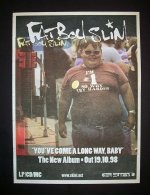There were a lot of reasons for the simplification of beats that started with hard/tech step in mid 95. The most important being the evolution of the bassline and the new synth and sampler technology that came in the later 90's. You have to remember that initially almost all Jungle was made on the Akai S950 sampler, which was the basis of almost everyones studios from 1991-199X. Producers who had the money would have one or two other synths, but they usually just sampled the sounds in to the Akai. The Akai had almost no synthesis structure, just basic non-resonant lp filter, and simple envelopes, but it had a test tone feature that generated a pure sine wave, which was the most common bass sound used on all the jungle tracks before the detuned saw waves, (reese bass) took over. Anyway, as more and more affordable analog modeling synths came out in the later 90's and the E-MU samplers with their extra morphing filters became used more and more, the complexity of the bass sounds and morphing, moving basslines became possible, it was necessary to make room in the mix for the more complex sounds. Crushing Amens sound best when they are the focal point of the mix, they are best complimented sonically with a simple bass tone under them. When you try to mix complex drum patterns and complex moving basslines with mid range sounds as well as low end, the music turns to mush really quickly. The style evolved to a simpler drum pattern so the bass and melody could become more complex and prominent in the tracks. Hence the 2 step beat's popularity


